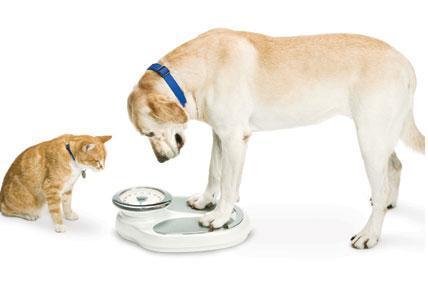Heritage Animal Hospital: July Is Pet Weight Management Month
July is pet weight management month. Data from the Association for Pet Obesity Prevention showed that over half of the nation’s cats and dogs are overweight. Overweight pets are at an increased risk of developing weight-related illnesses such as diabetes and arthritis.
You should watch your pet for signs of weight gain. Energy requirements change after a pet is spayed or neutered and often their diet may need to be adjusted to avoid weight gain. Some breeds such a Labrador Retrievers, Cairn Terriers, Cocker Spaniels, Dachshunds, Basset Hounds, and Beagles are at an increased risk of obesity. Middle aged dogs and females are also at an increased risk of obesity. Feeding calorie dense, highly palatable, high fat diets, and free-choice feeding increase the risk of obesity. Certain disease conditions such as hypothyroidism and hyperadrenocorticism can also predispose pets to weight gain. Some signs of weight gain include: difficulty feeling ribs or spine, can’t see a definite waist, abdomen sagging, face looking fuller, pet appears tired and lazy, hesitates when jumping, difficulty grooming, lagging on walks, and panting constantly.
Several steps can be taken to help control your pet’s weight. First cut back on treats and snacks. Treats are generally high in calories and contribute to your pet’s weight gain. Table scraps can also contribute to weight gain, and eating scraps can cause pancreatitis and g.i. upset. You can also feed less of your pet’s regular dry food. You should measure the amount of food that is put into the dish to prevent the serving size from increasing over time. The suggested serving amount on the package of food is a guideline based on the average cat or dog. Dry food is also often the best choice for your pet. Not only will dry food help maintain a healthy weight but will also help keep the teeth cleaner. An individual dog or cat may need, less, or more, than the average amount. Also an increase in the pets exercise or playtime will also help to maintain or lose weight. Then if these steps don’t help the pet maintain or lose weight then a low-calorie food should be considered. It is a good idea to speak with your veterinarian to help tailor a weight-loss program for your pet.
- Log in to post comments



























